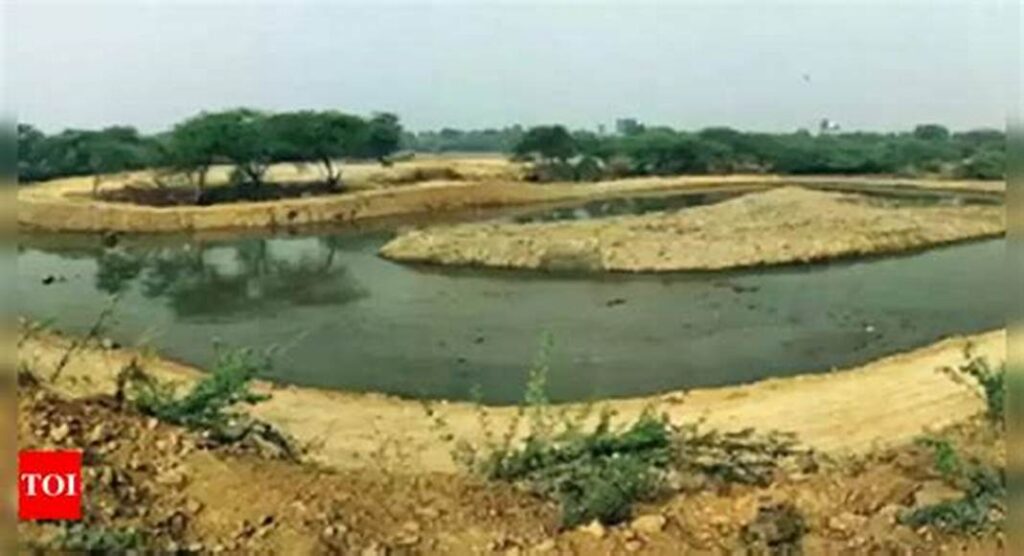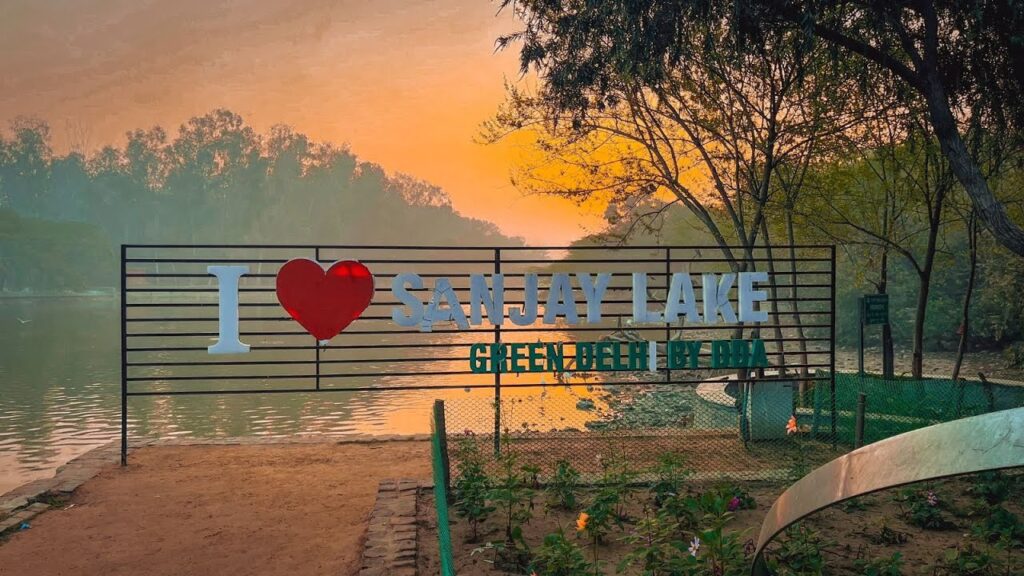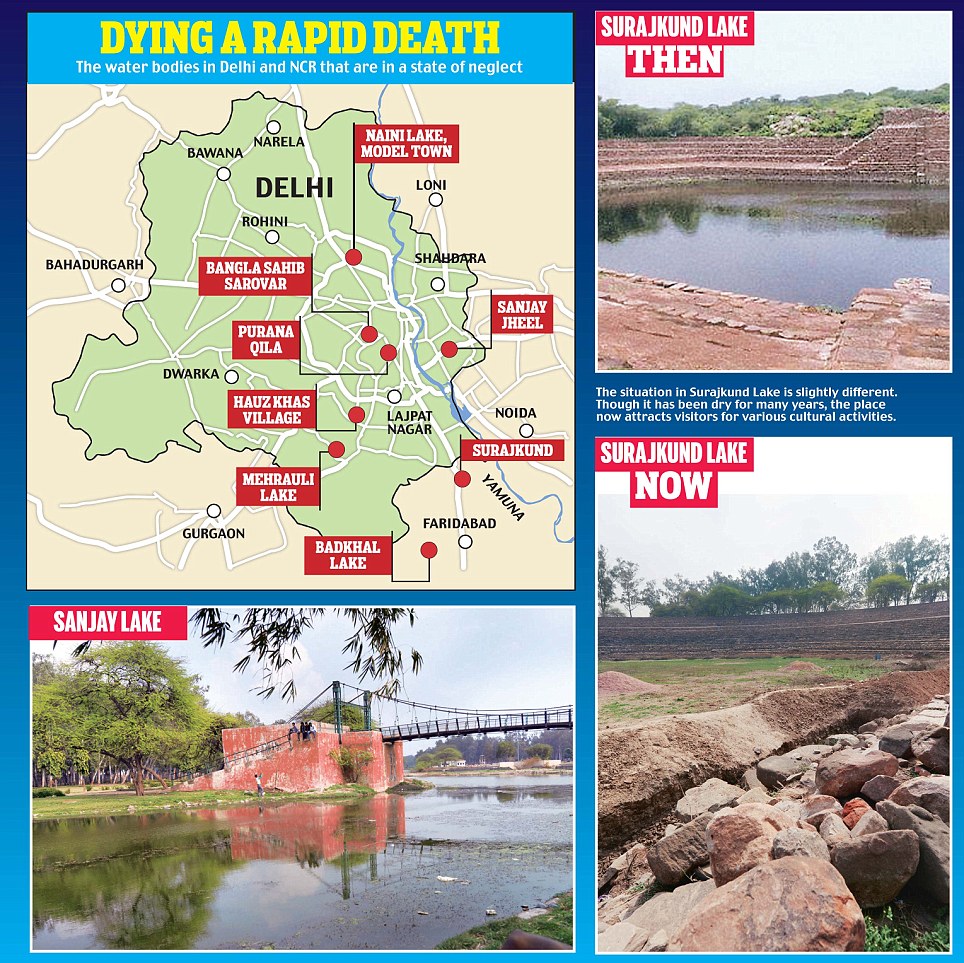Current News on Environment:
Delhi city serves some water bodies which enjoy special status protection under certain acts and this means that Wetland Conservation Rules 2017 would lack effect on them.
On its part, the State Wetland Authority (SWA) has identified 20 big water bodies across Delhi since 2021.
Recently, Sanjay Lake and Smriti Van at Vasant Kunj, SWA said, already enjoy protection under the Forest Conservation Act 1980 and such won’t be termed as Wetlands.
A senior officer who preferred to stay anonymous said, “We had sought details from agencies about water bodies we plan to notify as wetlands.
Recently, we also sought details on whether any of these were protected under other acts and found that two of these, Sanjay Lake in east Delhi and Vasant Kunj’s Smriti Van, were already protected under the Forest Conservation Act, 1980.
Wetland rules state water bodies already protected under other acts no longer need further notification under the Wetland Act and so, we are not notifying them as wetlands at present.”
Current news on the environment gathered from verified sources.
Delhi does not have a wetland or Ramsar site, even though it has over 1,300 water bodies listed on paper.
A wetland classified as internationally significant under the Ramsar Convention also called the Convention on Wetlands, is referred to as a Ramsar site.
Established in April 2019 as a result of the Wetlands Regulations of 2017, the Delhi SWA is a committed organization tasked with safeguarding and revitalizing Delhi’s water bodies.
Current News on the Environment is right here.
However, experts argued that because there was no established catchment region, designing urban water bodies, such as wetlands was complicated.
We have Mr Manu Bhatnagar, who sits in the seat of Principal Director of the Natural Heritage Division, Indian National Trust for Art and Heritage, who shares, “For water bodies like Bhalswa Lake or Hauz Khas lake, we don’t have a defined catchment, which the document brief requires. It also requires the high flood level (HFL) to be defined for the past 10 years, with no construction permitted within a 50-metre radius. Still, already, we have encroachments or structures within 50 metres of these water bodies”.
Environment News Updates in India:
Although certain water bodies are now protected by other laws, according to Bhatnagar, the restrictions will not be as severe as those found in the Wetland Act.
He sheds light, “The assumption is that there will be absolute protection for the surface, soil and water body in a forest, as no construction is permitted there. However, under the Forest Conservation Act, we don’t have details of the water bodies in terms of area, depth or catchment.”
Procedure paused Environment News Updates In India:

According to SWA officials, the pandemic caused a delay in the process even though the original plan was to start designating water bodies as wetlands in 2020.
Ten significant water bodies were recognized by the Delhi SWA in November 2021 for notification as wetlands in the first phase of the project. This included Sanjay Lake, Hauz Khas Lake, Bhalswa Lake, Najafgarh Jheel, Welcome Jheel, Smriti Van (Vasant Kunj), Smriti Van (Kondli), Pooth Kalan, Sultanpar Dabas and Daryapur Kalan.
The following year, 10 more water bodies were added to the list, which included those at Dheerpur, Mungeshpur, Jhatikra, two at Barwala, Mandawali Village and Rohini’s sector 1, among others.
The aforementioned official said, “For each water body, a brief has to be prepared, complete with details of its area, capacity and catchment among other features. We have been coordinating with water body owning agencies like Delhi Development Authority (DDA), Delhi Jal Board (DJB), Irrigation and Flood Control and revenue department, among others.”
According to the official, the Welcome Jheel notice is almost finished and should be completed by the end of the year.
Both Delhi and Haryana are yet to notify Najafgarh Jheel as a transboundary wetland, therefore both parties are awaiting word.

The environmental management plan (EMP) has been implemented by the two state governments to protect it, however, Delhi has not yet started when it intends to notify the Delhi side of the wetland.
In an earlier this month petition to the National Green Tribunal, the Haryana government stated that it intended to designate as a wetland only 75 acres of its territory.
Let’s see dear reader how things unfold but we shall keep you posted about the latest taking place in the environmental world.







7 Comments
you are in reality a just right webmaster The site loading velocity is incredible It seems that you are doing any unique trick In addition The contents are masterwork you have performed a wonderful task on this topic
I was suggested this web site by my cousin Im not sure whether this post is written by him as no one else know such detailed about my trouble You are incredible Thanks
Its like you read my mind You appear to know a lot about this like you wrote the book in it or something I think that you could do with some pics to drive the message home a little bit but instead of that this is fantastic blog An excellent read I will certainly be back
Blue Techker You’re so awesome! I don’t believe I have read a single thing like that before. So great to find someone with some original thoughts on this topic. Really.. thank you for starting this up. This website is something that is needed on the internet, someone with a little originality!
Thinker Pedia This is my first time pay a quick visit at here and i am really happy to read everthing at one place
Somebody essentially lend a hand to make significantly articles Id state That is the very first time I frequented your website page and up to now I surprised with the research you made to make this actual submit amazing Wonderful task
I have been absent for a while, but now I remember why I used to love this website. Thank you, I will try and check back more frequently. How frequently you update your web site?